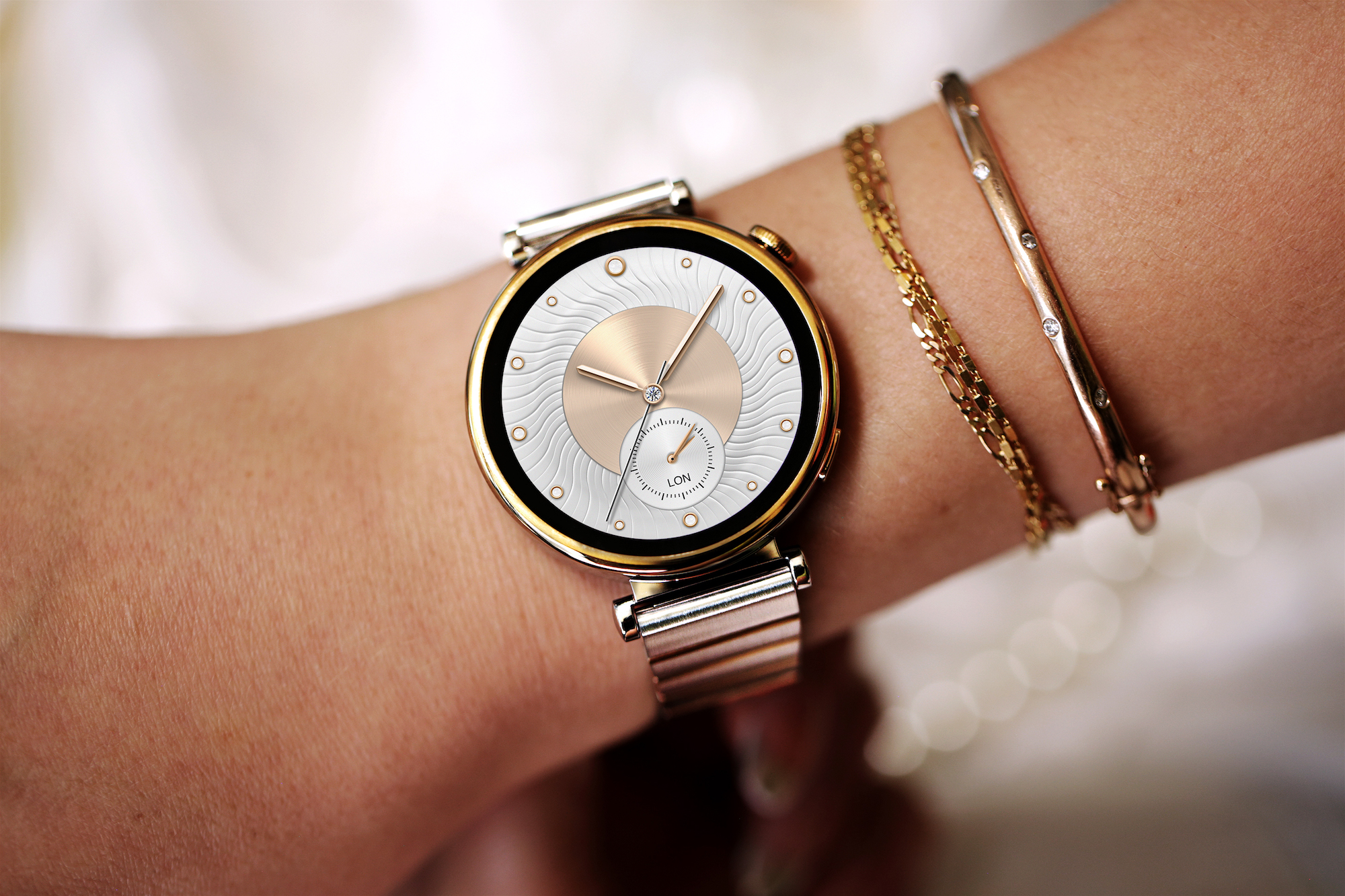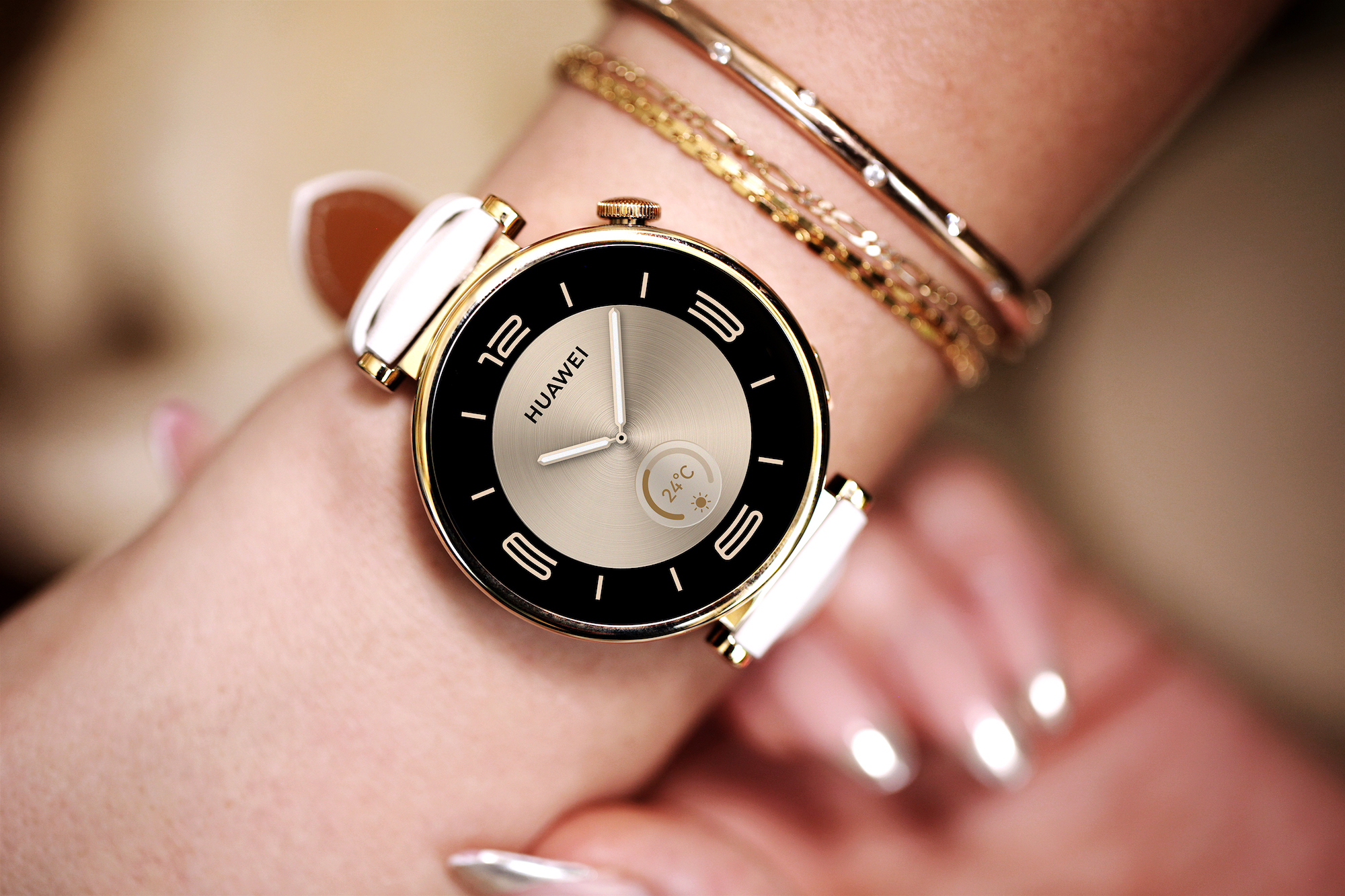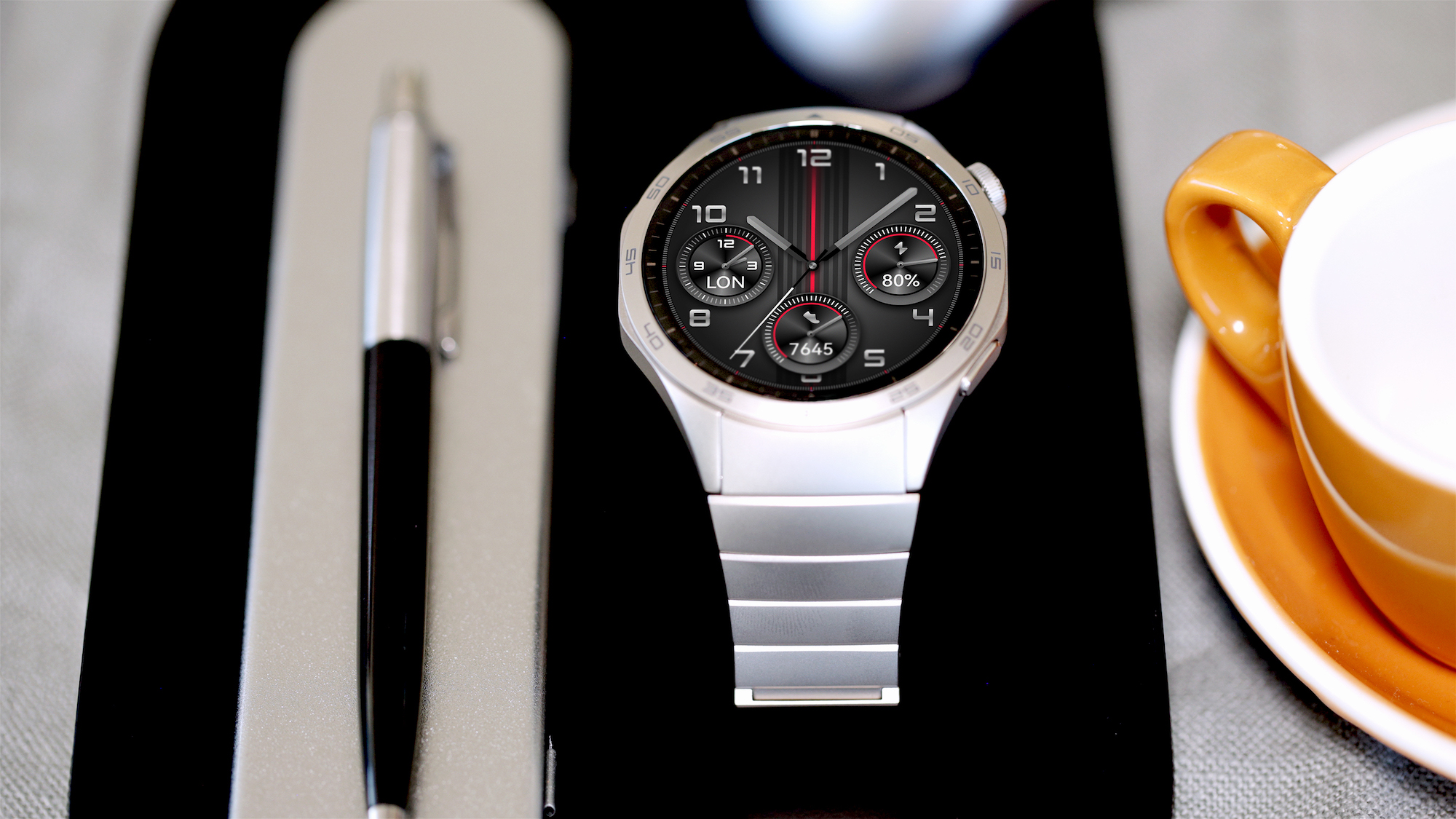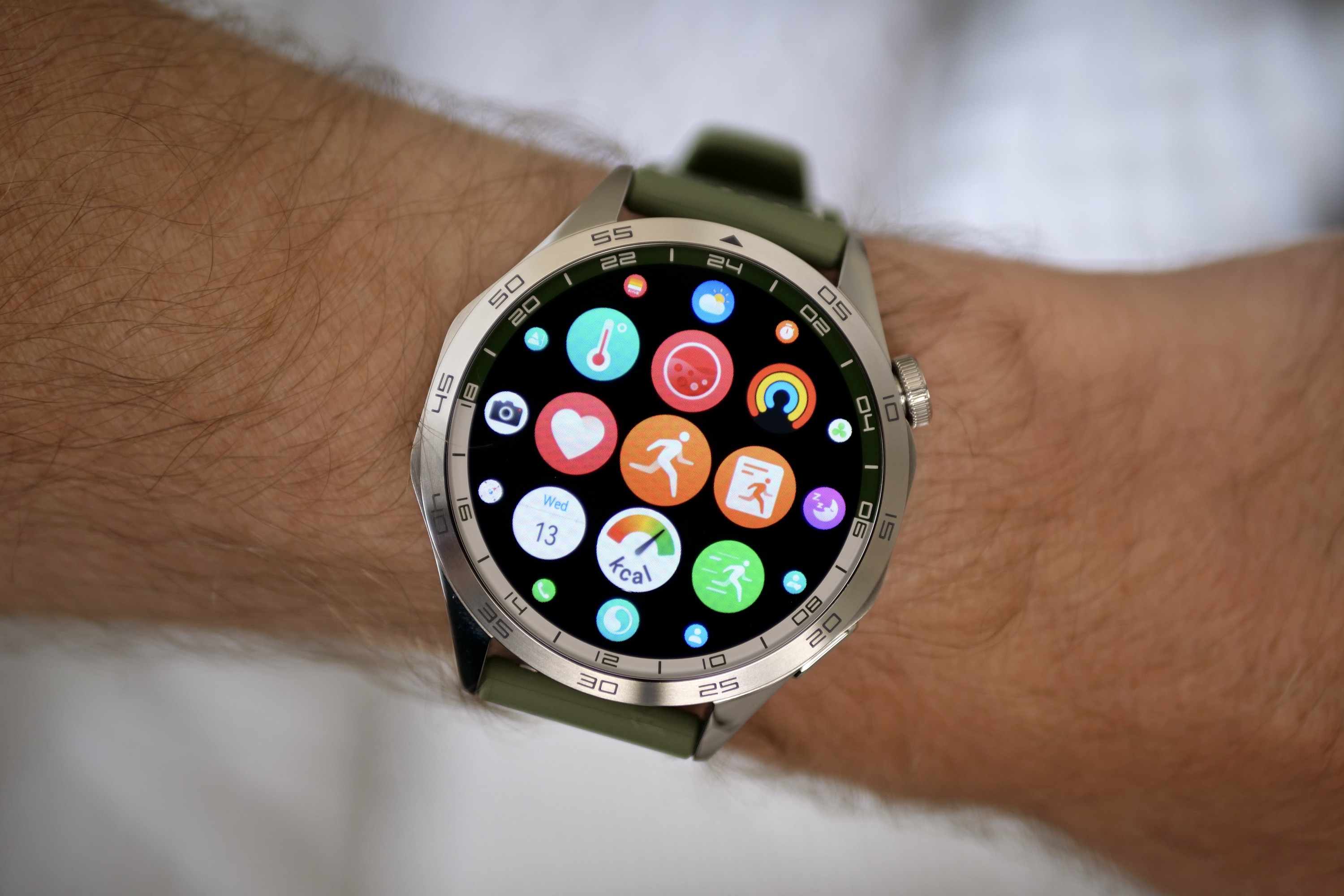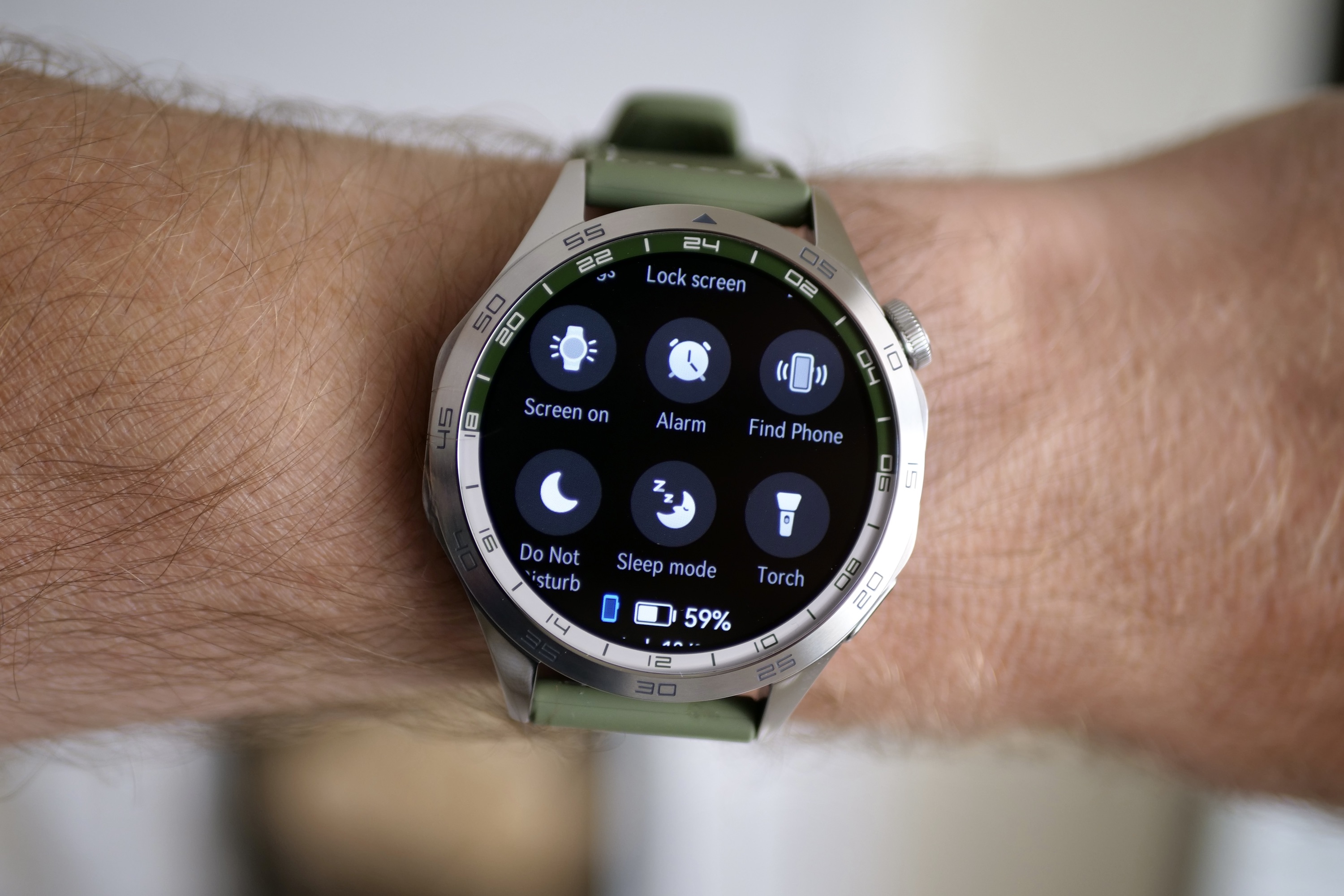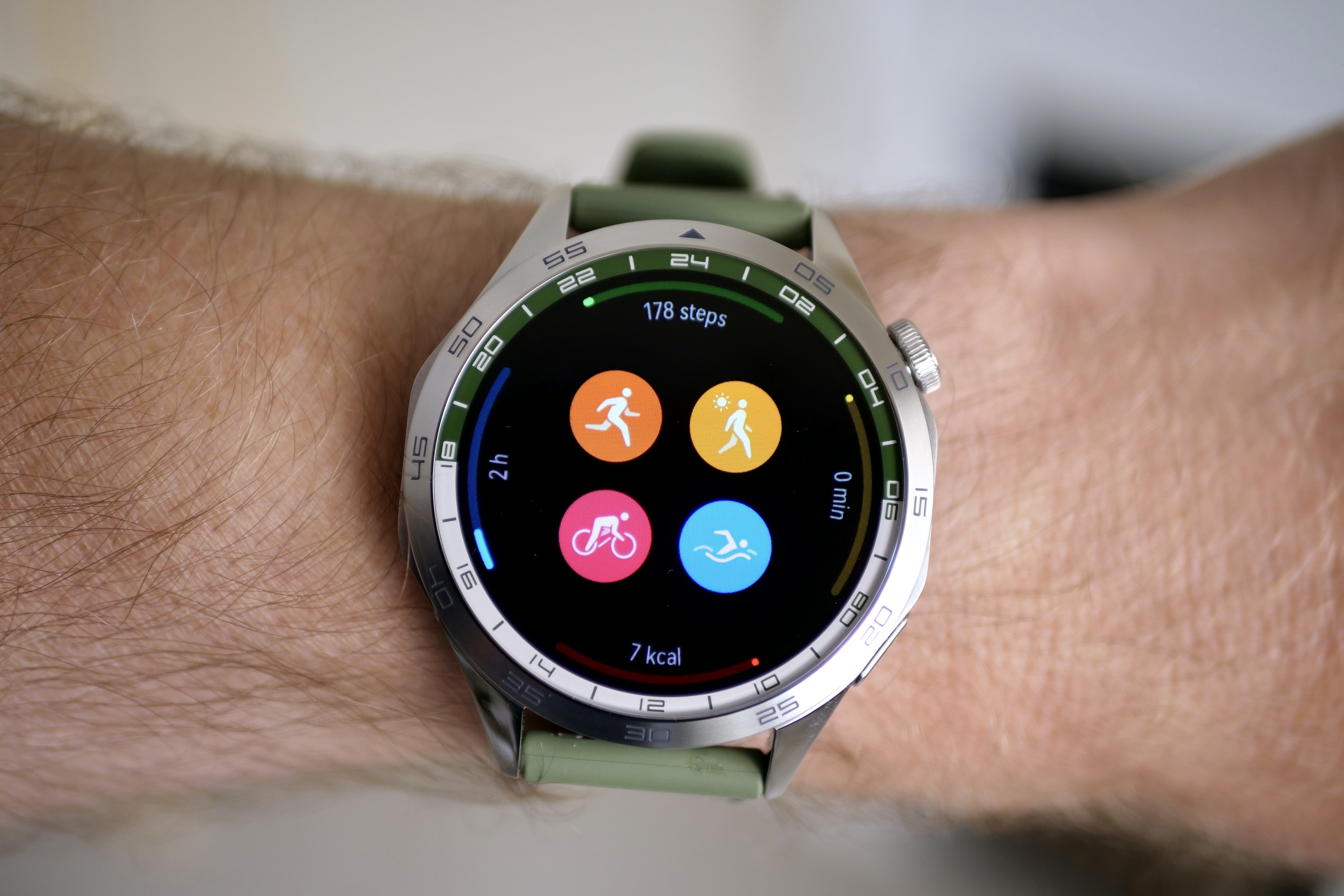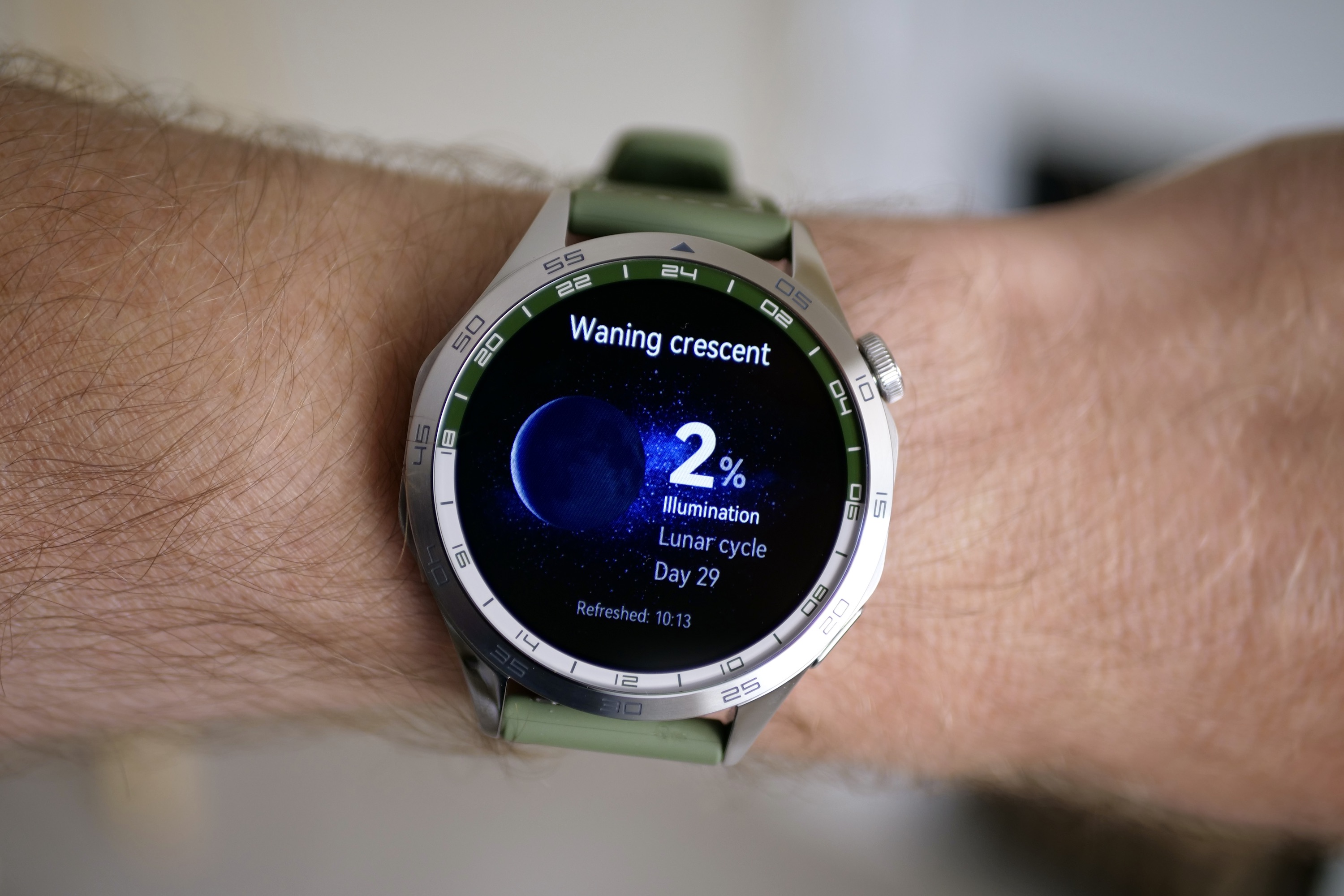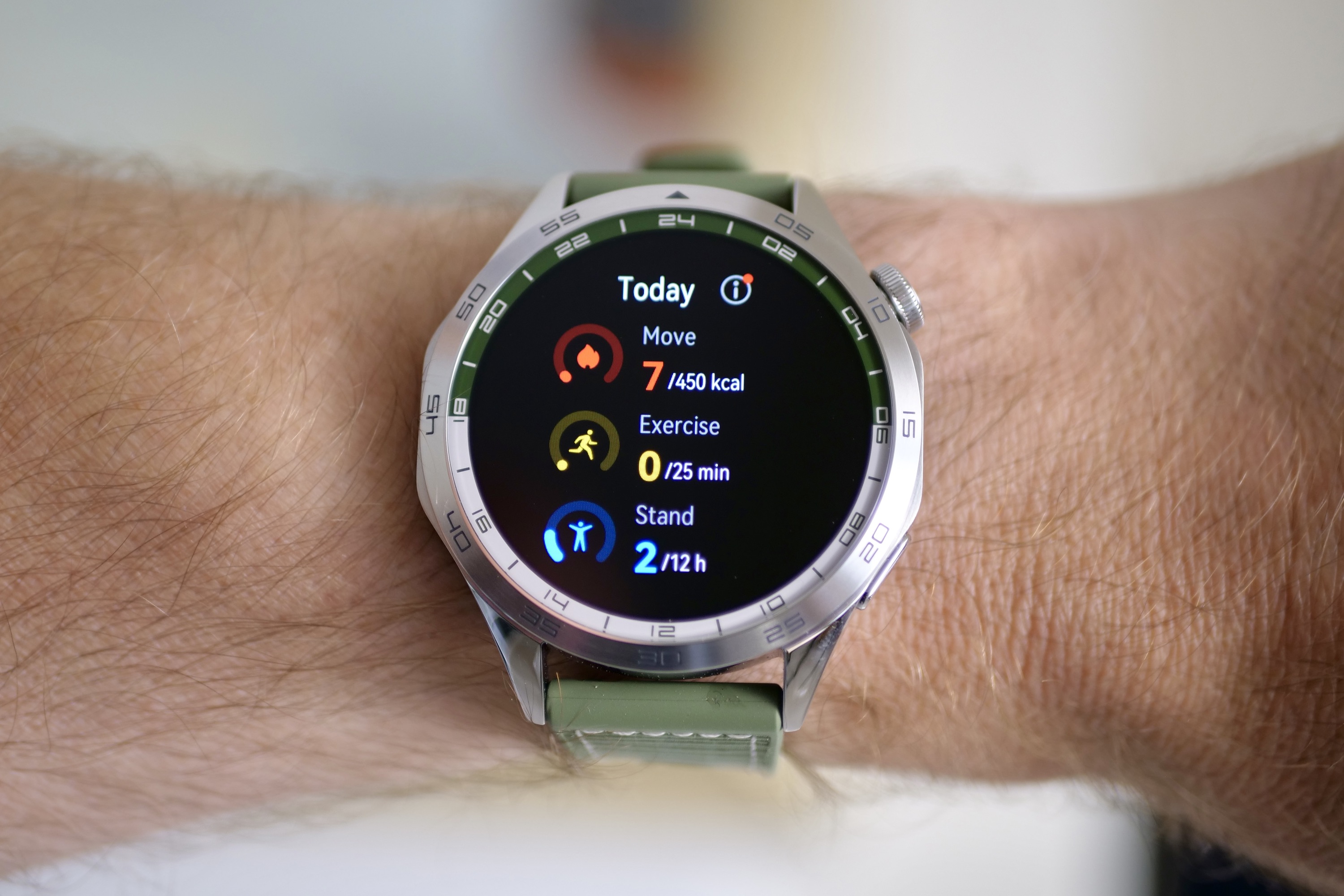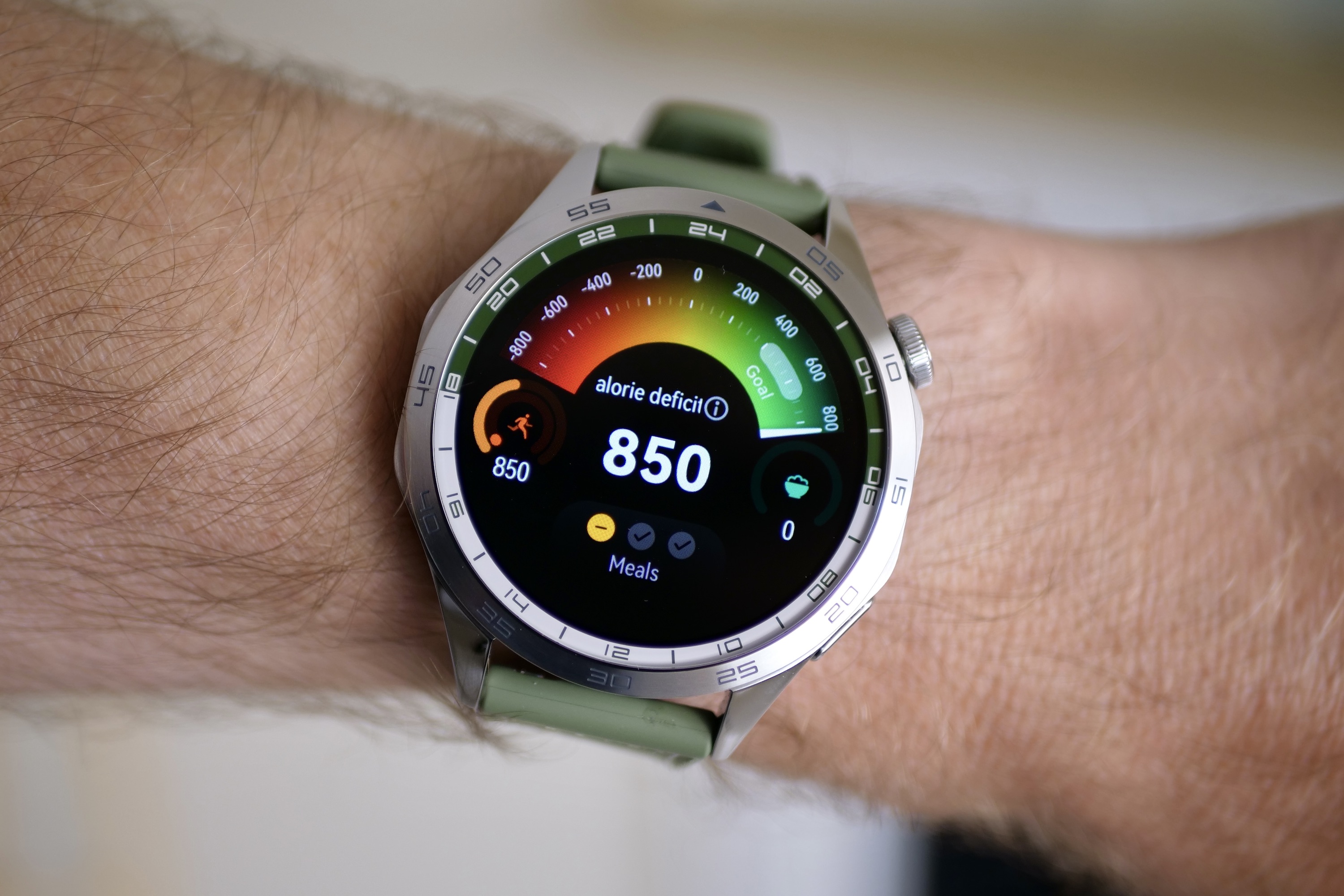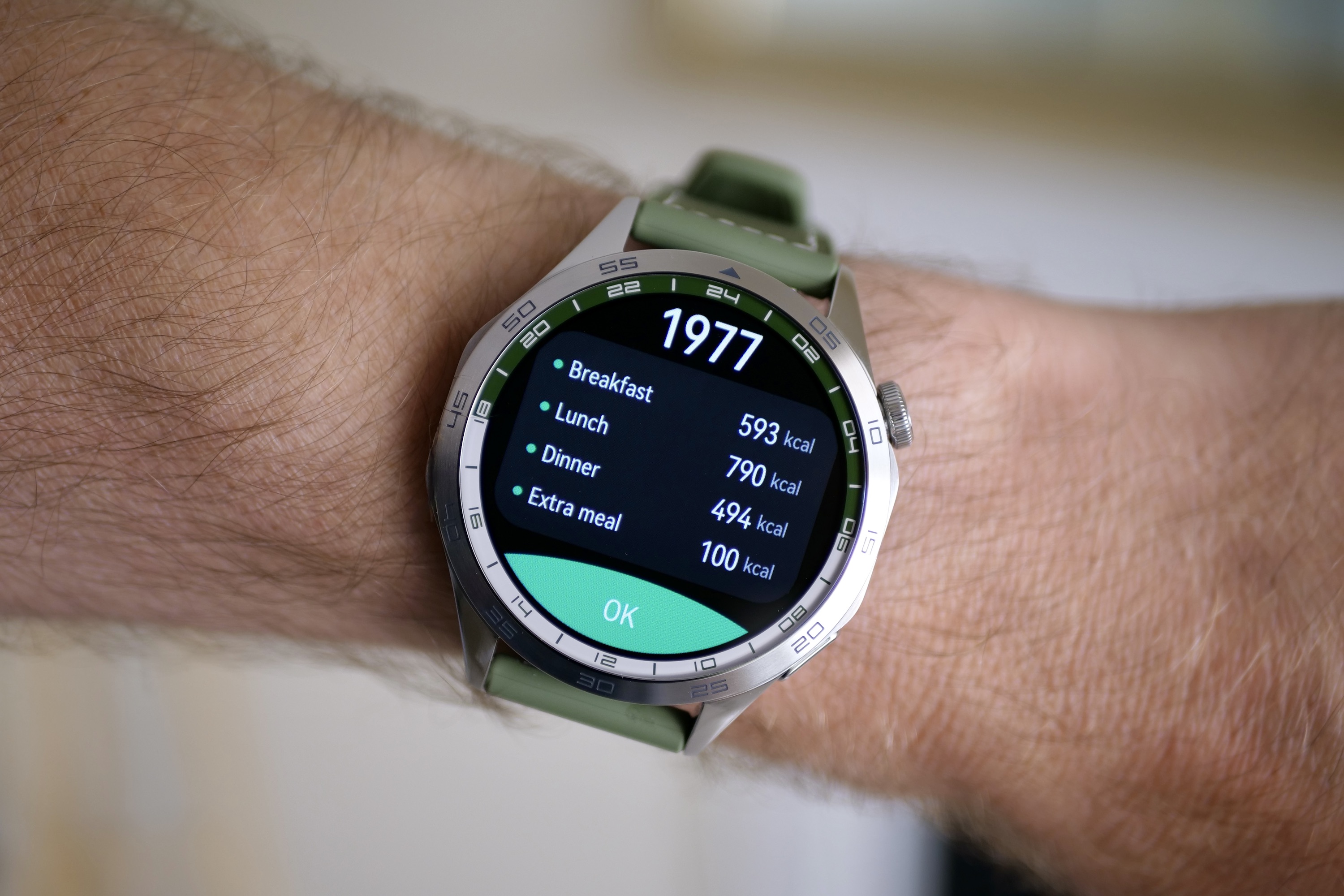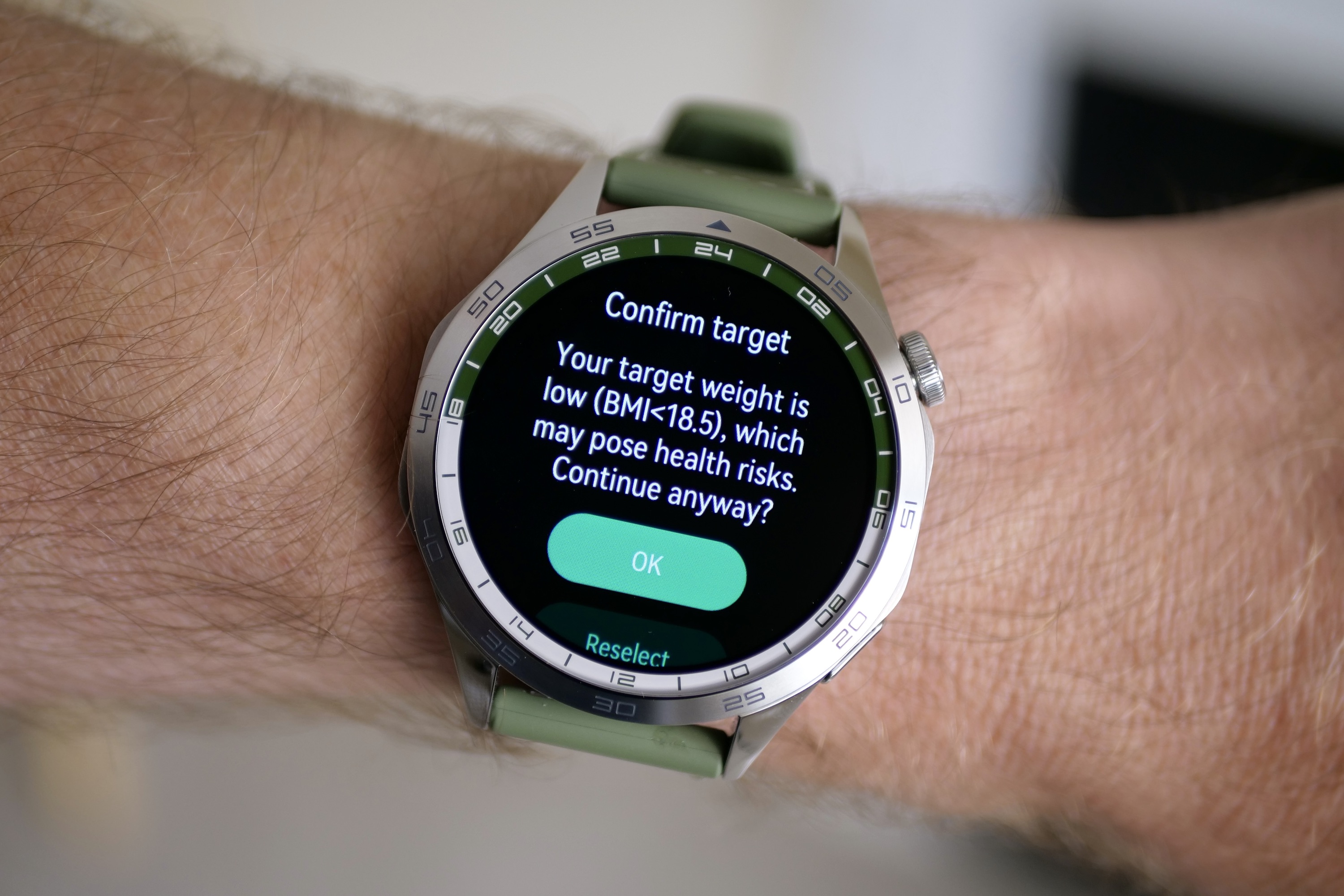
The Huawei Watch GT 4 is a “fashion forward” smartwatch, where the design is just as important, if not more important than the technology you can’t see inside it. Tech details like the processor and RAM have been swept aside, as Huawei attempts to shift focus to the octagonal shape and different strap and case size combos.
Huawei clearly wants the looks of the Watch GT 4 to do the talking, so is it saying, “Buy me?” Yes, it is, but how loudly and convincingly it says it will really depend on what phone you own.
Different Huawei Watch GT 4 models and the specs

There are seven different Huawei Watch GT 4 models, four in the Dynamic Octagon 46mm case size and three in a 41mm Elegant Pendant case size. The 46mm version comes in black with a black rubber strap, silver with a brown leather strap, steel with a steel bracelet, and silver with a green hybrid rubber strap. The 41mm comes in gold with a white leather strap, gold with a gold Milanese bracelet, and gold with a two-tone gold and silver bracelet.
The 46mm Watch GT 4 is 10.9mm thick and weighs 48 grams without its 22mm strap, while the 41mm version is 9.8mm thick and 37 grams without its 18mm strap. The screen sizes differ, too, with a 1.43-inch AMOLED on the larger watch and a 1.32-inch AMOLED screen on the smaller one. However, the resolution is the same at 466 x 466 pixels. Each version is made from stainless steel with a metal bezel and a case back made from a fiber polymer composite material.
Both have a 5ATM water resistance rating, plus IP68 water and dust resistance too, but the batteries are slightly different capacities, with the 46mm expected to last up to 14 days on a single charge and the 41mm version only seven days. This is only an average and will depend on how you use the smartwatch, and it also matches the performance quoted for the Huawei Watch GT 3. Each is recharged in 100 minutes using a wireless charging puck included in the box.
When asked about the processor, Huawei didn’t have any details to share but did state the GT 4 does share some components with the Watch GT 3 series. The TruSeen 5.5+ sensor array on the back of the smartwatch is the same as before, with software alterations providing the new features. The smartwatch runs HarmonyOS 4.0 software and is compatible with both iOS and Android using the Huawei Health app.
Wearing the Huawei Watch GT 4

I’ve been wearing the Rainforest Green GMT version of the Huawei Watch GT 4 for the last week. The strap is made from thick rubber with a nylon, NATO-style section running down the center, but it’s only for show and doesn’t touch your skin. It looks excellent and has been very comfortable to wear, and I’ve had no issues wearing it overnight for sleep tracking. At 71 grams with the strap, it’s a little lighter than the 47mm Galaxy Watch 6 Classic.
Huawei made a big deal about the somewhat octagonal shape of the Watch GT 4’s case, but it’s barely noticeable due to the round bezel and rounded sections between the lugs. It’s definitely no Audemars Piguet Royal Oak lookalike, in other words, and isn’t as clearly octagonal as the Casio G-Shock GA-B2100 either. It also shares a lot of design elements with the Watch GT 3, as the rotating crown is still at 2 p.m., and there’s a single button at the 4 p.m. mark.

It’s still a good-looking smartwatch, and I like that Huawei is sticking with its own unique style. The octagonal element spices it up just enough, and the various case finishes and strap options give you plenty of choice. It’s a little disappointing that the case back isn’t ceramic, as it does get a little sweaty, and it’s not sapphire over the screen either. Huawei has featured all this and more in the past, and Samsung uses sapphire on the Galaxy Watch 6 series. It not only adds durability, but the sheen from sapphire improves the look, and not featuring it at all does go against Huawei’s commitment to design and style here.
There are apparently 25,000 different watch face designs to choose from, and while you definitely will find ones you like, it’s a shame most can’t be individually customized. For example, the GreenSimple face in the photo below matches the strap and case really well, but it doesn’t have a custom ambient mode, so you get the default one which has a red hour hand, a white minute hand, and a flat black background, which doesn’t look so good. It would have been nice to change the hour hand to a green, at the very least, so you could really complete the look.
- 1. GreenSimple watch face
- 2. Default always-on display
Nit-picking? Yes, a bit. I could just use the Huawei Multi-faceted watch face option, which has green elements, and not worry too much about the plastic case back or lack of a sapphire crystal. But Huawei is emphasizing the design here, and in doing so, it means I would like the whole package to be as well-finished and thought out as the case.
Using the Huawei Watch GT 4

Think of Huawei’s HarmonyOS on the Watch GT 4 as a prettier version of Google’s Wear OS. It uses a similar system of “tiles” to show your activity, the weather, appointments, and health data. Plus, there’s a grid of circular app icons when you press the crown. The lower button opens the workout app by default, but it can be changed to pretty much any other app on the watch if you prefer. Swipe down to see quick actions and up to see your notifications.
I’ve been using the Huawei Watch GT 4 connected to an iPhone 14 Pro, and the setup process is easier than it is with Android. I’ve written about the hoops through which you must jump to get Huawei’s smartwatches working with a non-Huawei phone before, and it’s no different here. It’s actually easier with the iPhone and practically seamless if you own a Huawei phone. I have received notifications without a problem, although you can’t interact with them, and the fitness data syncs with Apple’s HealthKit.
It all looks fantastic, with colorful, bold, and clear icons and text, along with pretty graphics. It’s always obvious what everything does when swiping through the tiles, although the main menu icons can be a bit of a mystery. The Settings page is self-explanatory, and it’s easy to find what you want. I’ve tracked various workouts with the Huawei Watch GT 4, and it has worked perfectly. The records in the Health app are detailed without being overwhelming and are often beautifully presented.
The Huawei Watch GT 4’s new features include an increase in health tracking accuracy when the watch isn’t optimally placed or secured on your wrist, several new sports to track, including basketball and eSports, and a Smart Cycle Calendar update that takes skin temperature and heart rate variation (HRV) into account when making estimates about menstrual cycles. Wear the Watch GT 4 overnight, and it includes a breathing analysis feature that looks for snoring and signs of conditions like sleep apnea.
What I don’t like about the Huawei Watch GT 4
Leaving aside the pain of setting the Huawei Watch GT 4 up with a non-Huawei Android phone, the HarmonyOS software and Health app are among the best you can get on a fitness wearable. Performance is faultless, and it runs incredibly smoothly. It reacts instantly to your touch, and there’s no obvious lag at any time. HarmonyOS was made with wearables in mind, and it really shows.
There’s a new calorie tracker tile that I’m not a big fan of. You put in your current weight and target weight, and it spits out a calorie target to meet in order to achieve your goal. While it does give a vague warning about “you may not need to lose weight” when you set an unrealistic goal, and the calorie recommendation isn’t unreasonable, there are other ways to promote healthy living and weight management outside of this approach. The Oura Ring, for example, leaves calories out of it entirely.
When you exercise outside on a walk or a run, the Huawei Watch GT 4 will scream out your stats on a regular basis for you and the rest of the world to hear. While handy for cyclists or for anyone unwilling to look at their wrist, this embarrassing feature shouldn’t be on by default, and certainly not at the earsplitting volume it is. Huawei has been guilty of this for a while, and even Apple has started to do the same with the Apple Watch, and it’s a trend I look forward to being over.
An easy recommendation?

I really like the Huawei Watch GT 4. It looks good, there’s a choice of case sizes and styles, the software is excellent, and there are masses of health and activity tracking functionality. It’s even quite reasonably priced, as it starts at 230 British pounds, or around $286. It won’t be released in the U.S., but it will be available in the U.K. from October 4.
You have to assume that Huawei keeps quiet about the underlying processor specs because it’s the same platform as previous versions, but it’s not a problem in the real world as it’s a good performer. It’s superior to the Google Pixel Watch’s performance, and the battery life beats most other all-digital touchscreen smartwatches too.

Looked at this way, it’s an easy recommendation. However, it’s not the end of the story. Before I start, if you own a Huawei phone, you can ignore what I say next as it doesn’t apply to you because the Watch GT 4 is made with your phone in mind.
It took less than a minute to link the smartwatch to a Huawei Mate 40 Pro — which uses HarmonyOS and doesn’t come with Google Mobile Services or the Google Play Store — after simply scanning the QR code on the screen in Huawei Health and agreeing to a few different options. All the watch’s features are available, notifications can be interacted with, and the software is automatically updated. It’s the real deal.
The one big catch

While the Huawei Watch GT 4 is a reliable companion paired with an iPhone, and the required Huawei Health app is available in the App Store, it’s nowhere near as highly integrated or as polished as an Apple Watch. You should definitely buy an Apple Watch over any other smartwatch if you own an iPhone. Otherwise, you will miss out on many features.
Linking it to an Android phone is an entirely messy process, from downloading a separate app store to find the Health app, changing device permissions to install it, and then manually setting up everything from notifications to access to the inner workings of Android. In my experience, the end result is often unreliable, and even tweaking the settings rarely gets it running exactly right. Google’s Wear OS isn’t perfect in this regard either, but any Wear OS smartwatch is much simpler and more intuitive to set up, so the onboarding process is more welcoming, especially for newcomers and the less technically inclined.

It leaves me facing a dilemma. The Huawei Watch GT 4 is a very good smartwatch, but like previous versions, it requires a strong commitment from any tech-savvy Android phone owner — or to be a contrarian if you own an iPhone. There’s nothing at all wrong with the Watch GT 4 matched with a non-Huawei phone, but life will be easier and more complete if you choose a different smartwatch that more closely matches your phone’s operating system.
This leaves Huawei phone owners. They can buy the Huawei Watch GT 4 with the same peace of mind and confidence as an iPhone owner buys the Apple Watch because the right apps are already installed on the phone’s matching operating system for seamless connection and use. This probably best sums up what you need to know about the Watch GT 4: it’s very good, but approach with a very open mind unless you own a Huawei phone.
